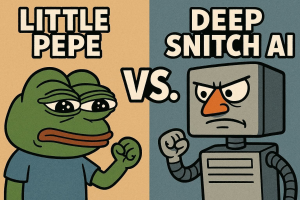Illinois Governor JB Pritzker speaks during a news conference at River Point Park, Monday, Aug.. 25, 2025, in Chicago. (AP Photo/Nam Y. Huh)
Copyright 2025 The Associated Press. All rights reserved.
As the federal government shutdown nears the end of its third full week, Democrats and Republicans on Capitol Hill are reportedly nowhere near a deal, or even the semblance of a deal to reopen government. The House-passed continuing resolution to fund government received 55 votes in the U.S. Senate, with all Republicans and three Democrats voting in support, but the 60 votes needed to break the Democrat-led filibuster remain elusive.
The crux of the dispute precipitating this shutdown is disagreement over whether to extend the temporarily boosted taxpayer subsidies for Obamacare, Medicaid, and Medicare that Democrats enacted in 2021 when they controlled the White House, House, and Senate. Senate Minority Leader Chuck Schumer (D-N.Y.) and other Senate Democrats are making the case that extending the temporarily boosted Medicaid transfer payments and Obamacare subsidies enacted by the Biden administration is a popular cause, so much so that voters will reward Democrats for shutting down the government over it, or at least not hold it against them. That argument faces an uphill climb based on a New York Times/Sienna Poll released days before the shutdown began, which found 59% of independents think Democrats should not have shut down the federal government. The same goes for nearly half (43%) of the Democrats surveyed.
Meanwhile the unified message coming from Republicans is that Democrats would rather shut down the federal government than end boosted subsidies that are too costly to taxpayers, serve to exacerbate the rising cost of care, and a portion of which flows to people who are unlawfully residing in the country. However, Senator Schumer and his fellow Democrats don’t appear to be on the same page like Republicans are because in rebutting that last point, Schumer and congressional Democrats have been contradicting one another.
Take Representative Jim McGovern (D-Mass.), who like Schumer is contending that illegal immigrants are not receiving taxpayer-subsidized health insurance as congressional Republicans and the White House assert. Congressman McGovern will need to take up that contention with his Democratic colleague Congressman Ro Khanna (D-Calif.), who conceded during an interview with Fox Business that illegal immigrants are receiving taxpayer-subsidized health insurance. However, Khanna defended it by asserting that “the amount of money that actually is going towards people who are undocumented is such a small portion.”
Congressional colleagues are not the only Democrats who have contradicted the claims from Schumer and company. In fact, leading Democratic governors recently provided even more prominent acknowledgments of the fact that U.S. taxpayers are subsidizing health insurance for illegal immigrants. Congressional Democrats who voted to shutdown the federal government should be aware of this since many of them reside in a blue state where the governor is a fellow Democrat who recently repealed Medicaid eligibility for illegal immigrants.
Back in May, for example, Governor Gavin Newsom (D-Calif.) signed a new state budget that scaled back, but did not fully repeal Medicaid eligibility for illegal immigrants. “In signing the budget, Mr. Newsom backtracked on his earlier pledge to insure all low-income residents, regardless of their immigration status,” the New York Times reported in June. “But it came as the state faced a $12 billion deficit, driven in part by a large cost overrun in the state’s insurance plan for undocumented immigrants, and it would have been politically difficult to cut programs for citizens without reducing benefits for undocumented immigrants.”
Newsom isn’t the only blue state governor to scale back taxpayer-funded health insurance for illegal immigrants this year. In May, Minnesota legislators and Governor Tim Walz (D-Minn.) enacted a new state budget that ends Medicaid eligibility for adult illegal immigrants at the end of 2025. Children residing in Minnesota illegally will remain eligible for the state’s Medicaid program. NBC News described the move as “effectively reversing one of the signature policy wins Walz secured during a landmark legislative session in 2023, when Democrats were in full control of state government.”
Meanwhile another 2028 presidential contender, Illinois Governor JB Pritzker (D), also removed illegal immigrants from Medicaid rolls this year as part of the new state budget he signed into law in May. “Specifically, Pritzker’s new budget proposal will cut the Health Benefits for Immigrant Adults (HBIA),” Federation for American Immigration Reform (FAIR) explained in blog post.
“HBIA, introduced in 2021, provided health care coverage to low-income adults, regardless of immigration status, aged 42 to 64 who were ineligible for Medicaid due to their immigration status,” FAIR added. “The program is now scheduled to end on July 1, 2025. Illinois has a similar program for seniors 65 and older, called Health Benefits for Immigrant Seniors (HBIS), but this program is not being cut at this time.”
The Fungibility Of Federal Transfers
“This is a lie,” Senator Schumer remarked about the White House’s claim that continuing taxpayer-subsidized health insurance for illegals immigrants is more important to Democrats than funding the government. “Not a single federal dollar goes to providing health insurance for undocumented immigrants,” Schumer added in a statement posted to X less than six hours before the government shutdown took effect, adding “NOT. ONE. PENNY.”
The key factor Schumer’s criticism misses, Vice President JD Vance wrote in response, is that “money is fungible.” That, Vance added, is “why the Democrat[s] and media lie that health care is not going to illegals is so preposterous.” Vance expanded on his point further:
“Consider, for instance, two state Medicaid programs–Ohio and New York. New York gives Medicaid to illegals and Ohio doesn’t,” Vance added. “When the government gives billions of dollars to New York for Medicaid, that frees up state money in New York that can then be spent on illegals.”
“Additionally, because medical services are limited in supply, when an illegal accesses health care, it drives up the cost for everyone,” the Vice President continued. “So New Yorkers are paying a higher price for medical services, and the federal government is subsidizing those higher prices.”
Aside from the fungibility of state dollars, Niklas Kleinworth, senior fellow at the Paragon Institute, points out that “some states took gaming welfare one step further by using legalized money laundering schemes in Medicaid to fund healthcare programs for illegals.”
“California did just this by taxing insurers who help run their Medicaid program, then used those funds to get a higher federal match in Medicaid,” Kleinworth added. “The state then uses those additional funds to pay-off insurers for their contribution, then pockets the rest for things like their healthcare program for illegals.”
Surveys showing that most people oppose the current government shutdown, coupled with the fact that three Senate Democrats already voted with Republicans to keep government open, have put Schumer and fellow Democrats in a weak position from the start. Despite the relative lack of media coverage this government shutdown is receiving, Senator Schumer’s insistence that the filibuster can only end once Republicans and Democrats agree on changes to the U.S. health care system is a position that will likely to become increasingly untenable as time passes.
Source: https://www.forbes.com/sites/patrickgleason/2025/10/17/conflicting-messaging-and-inconvenient-facts-about-the-shutdown/



